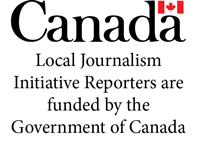TORONTO – School bells will ring on Jan. 17, summoning children back to classrooms following a two-week delay with around two million students stuck at home learning virtually.
In a Jan. 12 announcement alongside the province’s top doctor, Kieran Moore, Ontario education minister Stephen Lecce said children “will return to in-person learning” this coming Monday.
“We believe so strongly that children need to be in school; that [schools] are essential to the mental and physical health of a child and to their academic success,” Lecce remarked.
In the five days leading up to the in-class return, the province intends to distribute 3,000 standalone HEPA filter units, 10 million (non-fitted) N95 masks, four million three-ply masks and nearly four million rapid antigen tests to Ontario school boards.
Even with the rush of preventative supplies to schools, provincial officials are anticipating that school staffing challenges, due to Omicron’s spread, could lead to school closures.
To help keep schools open, the ministry is permitting retired educators to return to classrooms for up to 95 days and is issuing temporary teaching certificates (around 3,400 in 2021) to teacher candidates and those still getting their teaching education.
Schools can also combine classes and move students around to different classes during staffing shortages, but must maintain legislated caps on class sizes.
Contact tracing and case management for schools has been discontinued by the province and is being replaced by the reporting and monitoring of levels of absenteeism among staff and students.
School principals will be required to report absenteeism to local public health units and if levels reach 30 per cent, public health and education officials are expected to communicate with families about reasons why levels have increased.
Reporting won’t specify why someone is absent from the classroom – whether because of a COVID-19 infection or an unrelated reason – but Moore said during Wednesday’s announcement the province has “plenty of experience using absenteeism data” for other viral respiratory seasons, and an increase in absences would likely correlate to an increase in the spread of the virus.
Reaching the 30 per cent threshold will not prompt school closures, provincial health officials said.
Moore also said families can expect more sensitive, “enhanced” daily screening requirements.
To further help in screening for the virus, the province will provide enough rapid antigen tests to school boards across the province for every school staff member and elementary student (along with child care settings) to receive two tests the week of Jan. 17.
High school students will have access to rapid tests on an as-needed basis, Lecce said, explaining elementary students would receive tests first with high school students able to access a test only if symptomatic, until the province’s stockpiles are replenished by the federal government.
Another 1.2 million tests are expected to reach school boards next week.
Neither Lecce nor Moore said how often rapid tests would be provided.
Staff and students who become symptomatic while at school will also be provided with take-home PCR tests, Moore said.
According to the chief medical officer of health, around 200,000 PCR tests have already been provided to schools.
The province has also asked local public health units to identify school settings were dedicated clinics could be established offering vaccinations to the five-to-11 age group with parental consent as a central focus.




